Comprehensive Assessment of Spoken Language (CASL-2)
- Ages 3 through 21 years
- Testing Time 5 - 10 minutes for each test and 45 minutes for the General Language Ability Index
- Administration Individual
- Copyright 2017
-
Product Code SERIES ( MR #066184 )
* Regional restriction: This item is only available for sale within Canada.
- All new normative data and more extensive clinical groups
- 14 individual tests (the original CASL’s Paragraph Comprehension test was removed)
- Expanded age range for most of the 14 tests to include younger children
- Updated item content to address current technology (no more payphone!)
- Full-color easels featuring new artwork that is more engaging for young children
- Alternative scoring guidelines for African-American dialect
- Updated record form design that makes scoring easier and includes an Item Analysis Worksheet for each test, to help develop intervention plans and write IEP goals
- Easy to remember start and stop rules that are consistent across all tests
- Lexical/Semantic: Knowledge and use of words and word combinations
- Syntactic: Knowledge and use of grammar
- Supralinguistic: Knowledge and use of language in which meaning is not directly available from the surface lexical and syntactic information
- Pragmatic Language: Knowledge of language that is appropriate across different situational contexts and ability to modify language according to the social situation
- Each of the 14 tests (specific skill scores)
- Lexical/Semantic Index, Syntactic Index, Supralinguistic Index (categorical index scores)
- Receptive Language Index and Expressive Language Index (language processing index scores)
- General Language Ability Index (GLAI) (overall skill index score)
-
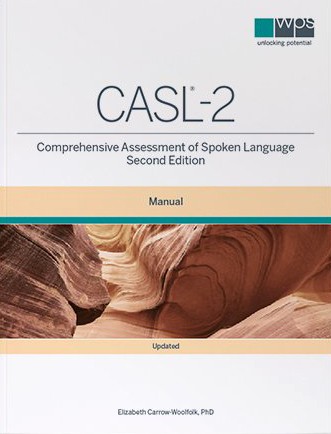
Comprehensive Assessment of Spoken Language (CASL-2)
CASL-2 Complete Kit
$1,078.80 -

Comprehensive Assessment of Spoken Language (CASL-2)
CASL-2 Manual
Updated
$266.40 -
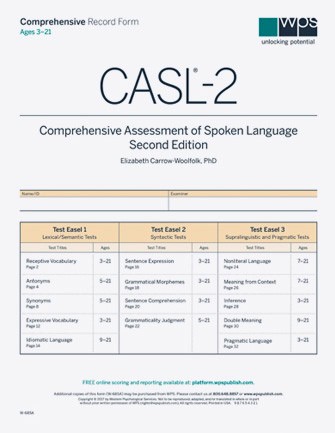
Comprehensive Assessment of Spoken Language (CASL-2)
CASL-2 Comprehensive Forms (10)
$105.60 -
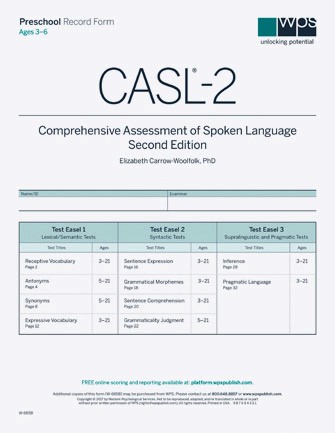
Comprehensive Assessment of Spoken Language (CASL-2)
CASL-2 Preschool Forms (10)
$99.60 -
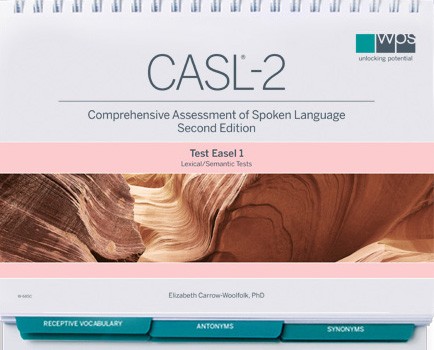
Comprehensive Assessment of Spoken Language (CASL-2)
CASL-2 Test Easel 1
Lexical/Semantic Tests
$290.40 -
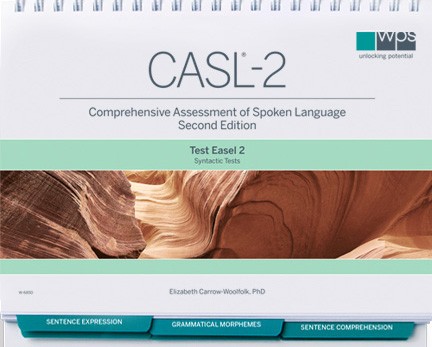
Comprehensive Assessment of Spoken Language (CASL-2)
CASL-2 Test Easel 2
Syntactic Tests
$290.40 -
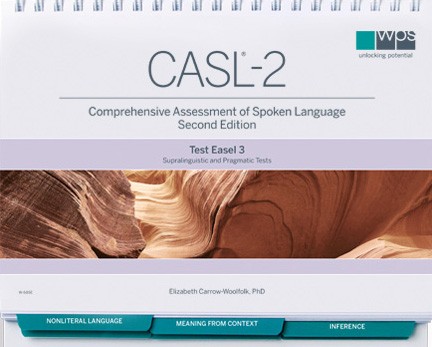
Comprehensive Assessment of Spoken Language (CASL-2)
CASL-2 Test Easel 3
Supralinguistic and Pragmatic Tests
$290.40 -
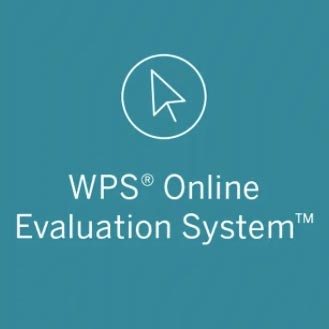
Comprehensive Assessment of Spoken Language (CASL-2)
CASL-2 ONLINE Manual
Updated
WPS Online Evaluation System
$216.00 -

Comprehensive Assessment of Spoken Language (CASL-2)
CASL-2 ONLINE Digital Easel 1
Updated
WPS Online Evaluation System
$236.40 -

Comprehensive Assessment of Spoken Language (CASL-2)
CASL-2 ONLINE Digital Easel 2
Updated
WPS Online Evaluation System
$236.40 -

Comprehensive Assessment of Spoken Language (CASL-2)
CASL-2 ONLINE Digital Easel 3
Updated
WPS Online Evaluation System
$236.40
No additional information available for this item.

 Proud to be Canadian
Proud to be Canadian